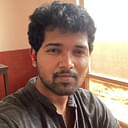No driver was left as heartbroken as Chris Buescher after last Sunday’s race in Kansas. He’d been a mere number of yards away from clinching his maiden victory of 2024 before Kyle Larson showed up to foil his day. He ultimately finished 0.001 seconds behind the Hendrick Motorsports driver producing the closest ever finish in NASCAR history.
Advertisement
Speaking on the Backstretch Banter program, he revealed the scenes that transpired after the race ended and why he trusted the official result. He said, “We are all learning stuff on how it’s looked at. How it’s done there at the end. Obviously, there’s the camera system. That was the ultimate word. We’re going off of transponders at what time and scoring says.”
How long did it take @Chris_Buescher to process that he finished second?
He joins us on a new episode of Backstretch Banter, airing at 2PM ET today on @SiriusXMNASCAR.
: https://t.co/XNQ5hN9Nl0 pic.twitter.com/VMTX8g15VG
— RFK Racing (@RFKracing) May 8, 2024
“It is transponders down to a thousandth of a second that we use for every other important measure at the race track every week.” Backing the regular usage of transponders he reiterated his confidence in them and said that there was no space for questioning the verdict. Notably, the transponders put Buescher ahead of Larson on Sunday according to a report from Fox Sports.
However, the margin of error on these pieces of technology is +/-0.0015 seconds. There are uncontrollable scenarios in which the angle of the car or the position of the transponder on the car could trigger it earlier or later than when actually crossing the finish line. This makes images the best judge to rely on during such close-cut finishes.
Detailing the camera system and the transponders that are used to determine race finishes
The camera system that NASCAR uses is the same as the ones used in Olympic events and other major sports. It consists of a razor thin line and a high speed camera. Any object that moves past the line is captured by the camera at several thousand images per second. Computer softwares is then used to stitch these images together and create a complete real-time picture of when the object hit the line.
.@SteveLetarte and @ToddBGordon break down the process of determining a winner in a photo finish. pic.twitter.com/KGqAGws65Z
— NASCAR (@NASCAR) May 7, 2024
The transponders, on the other hand, are fitted on the car near the center section of the chassis. Timing lines that are on the racing surface note where the car is compared to the finish line. So, when the car breaches the finish line the transponder gets triggered automatically by the timing lines.








